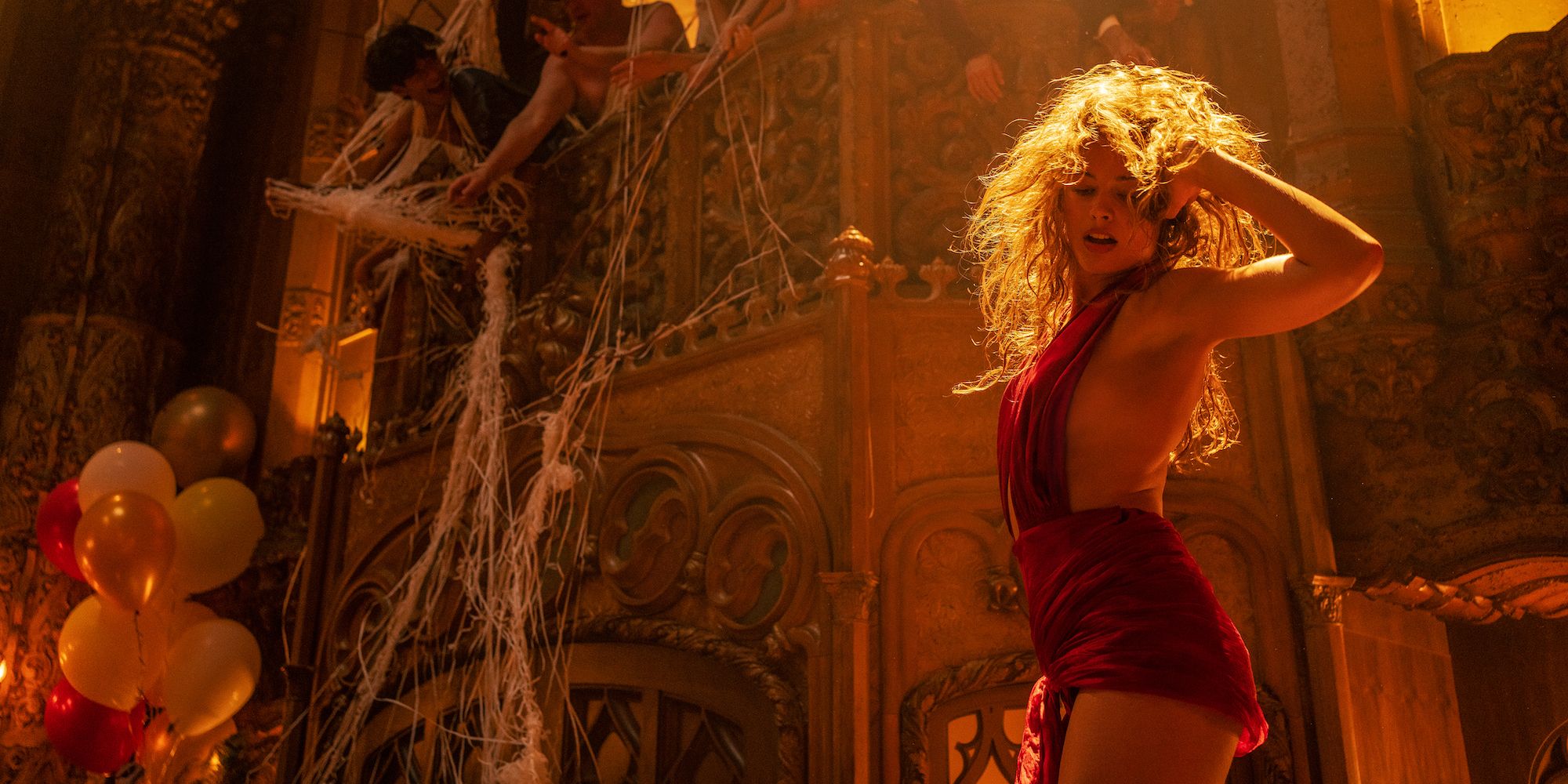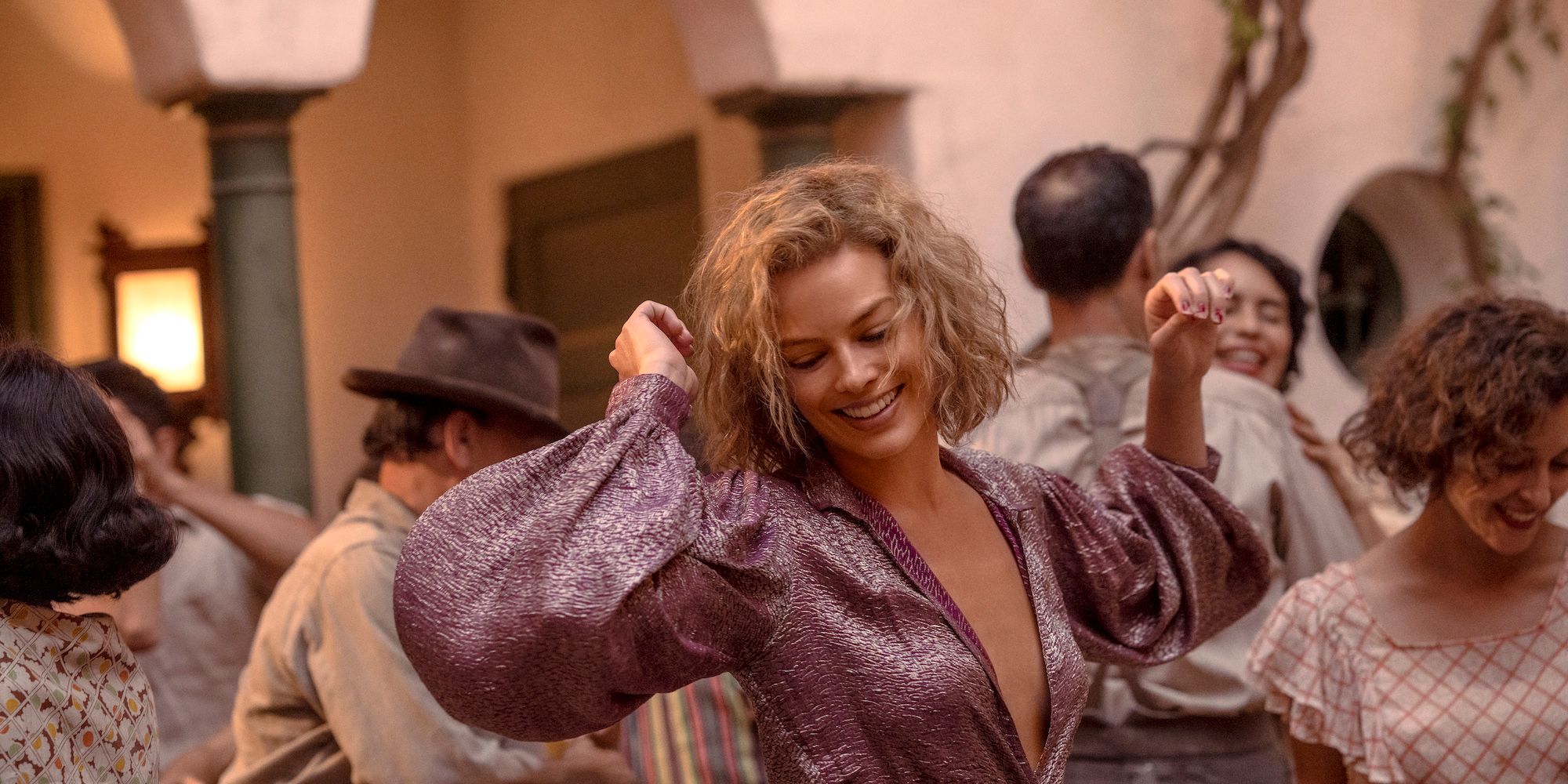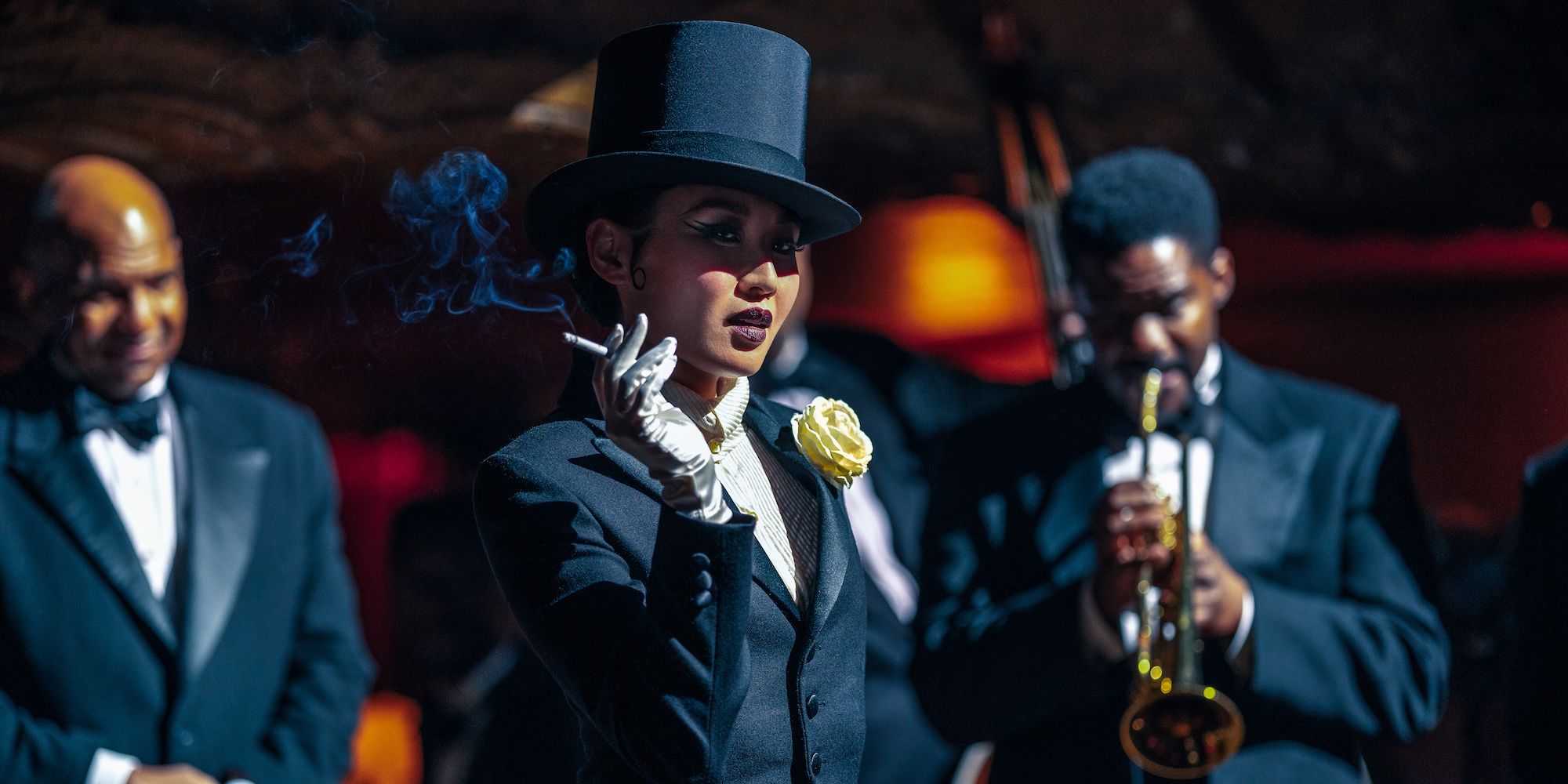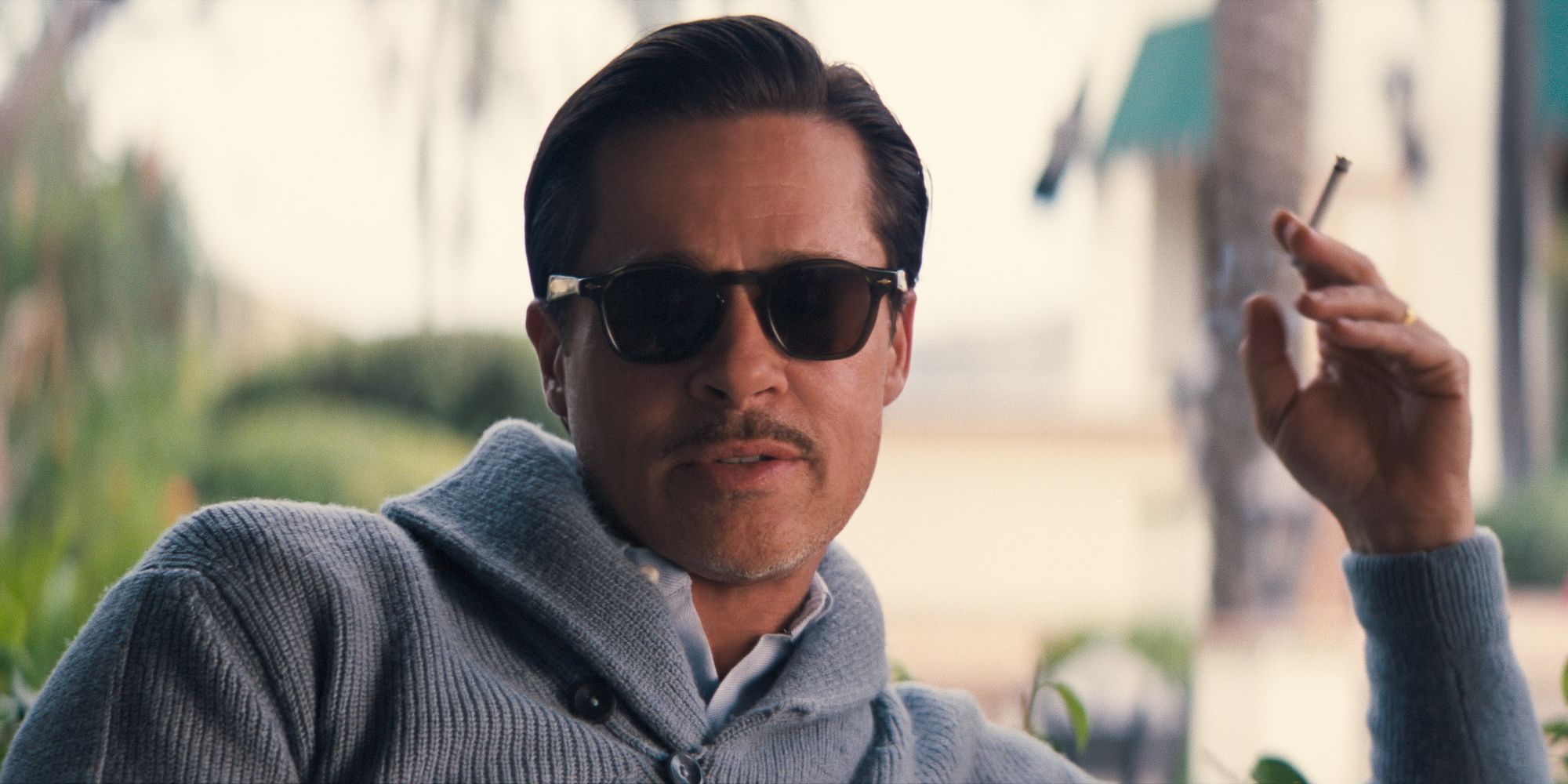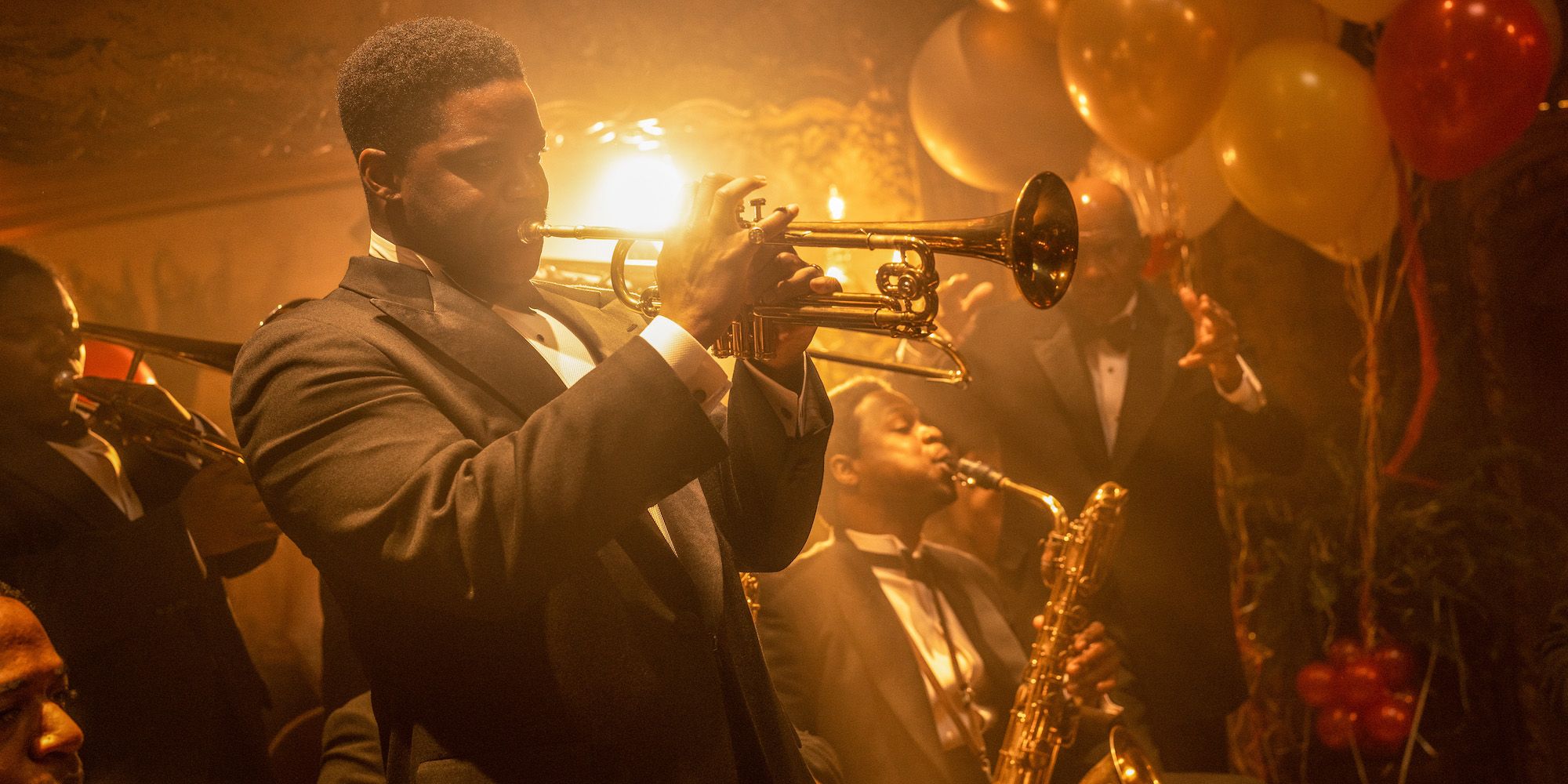Summary
- The end of Babylon portrays both the highs and lows of Hollywood careers, celebrating the industry’s lasting influence.
- Babylon’s controversial ending montage showcases key films that changed Hollywood throughout history.
- The characters in Babylon face tragic fates and career struggles, with themes of addiction, suicide, and the impact of Hollywood’s changes.
Warning: This post contains mentions of suicide.
Babylon‘s ending explained that there is both good and bad in Hollywood, but in the case of the individuals who helped build it, it’s worth it. The cast sees Brad Pitt, Margot Robbie, and Diego Calva as silent film-era figures facing the ups and downs of an ever-changing industry. Old Hollywood’s highs are shown through breakout performances by young stars and elaborate parties by established icons, with the industry’s lows being highlighted by career downfalls, overindulgence, and destructive behaviors amid the advent of talkies.
The end of 2022’s box office bomb Babylon reveals that Nellie’s body is found shortly after leaving Manny behind, Jack dies by suicide, Sidney Palmer leaves Hollywood, and Elinor St. John eventually passes away. Still, it ends on a rather hopeful note as Manny returns to Los Angeles with his family and tearfully watches Singin’ in the Rain, which is intercut with a montage of movies from the past century. The film industry entertains the next generation of moviegoers in new ways, all while Babylon showcases the toll Hollywood takes on those working hard to keep their careers afloat.
Related
Babylon Cast & Character Guide
Damien Chazelle has assembled a large, well-known cast for Babylon, his ode to the silent film era. We break down the cast and who they portray.
Babylon’s Ending Montage
All Movies & Why It’s Controversial
Babyon‘s final moments include a montage of movies throughout Hollywood history, including the first moving picture, Horse in Motion, and James Cameron’s 2009 hit movie Avatar. The film’s ending shows Hollywood as a dark and dangerous place, but it is also one that built dreams for the world to see, which Chazelle expresses through the film montage. Even though the montage is meant to celebrate movie history, with all that came before and after the events of Babylon, the sequence became quite controversial among critics and audiences.
The controversy over the montage comes from the notion that Babylon‘s ending glosses over the tragedies littered throughout the movie, such as the fates of Jack and Nellie. Yet, despite this, what happens in the divisive Babylon ending is that it celebrates the history and glory of movies. Babylon is not just about the depravity of Hollywood and how it destroys lives, but about how it wassomehow worth it to create movie magic. Viewers watch people die and careers destroyed, yet Manny smiles and feels it is worth it because of the cinematic advancement.
Here’s every movie featured in Babylon‘s ending montage:
|
Movie Title |
Year Of Release |
|---|---|
|
The Horse in Motion |
1878 |
|
Cat Trotting, Changing to a Gallop |
1887 |
|
The Arrival of a Train |
1895 |
|
Annie Oakley |
1894 |
|
Birth of the Pearl |
1901 |
|
A Trip to the Moon |
1902 |
|
Ali Baba and the Forty Thieves |
1902 |
|
The Great Train Robbery |
1903 |
|
Little Nemo |
1911 |
|
Intolerance |
1916 |
|
The Champion |
1915 |
|
The Vampires |
1915 |
|
Joan the Woman |
1916 |
|
Within Our Gates |
1920 |
|
The Voice of the Nightingale |
1923 |
|
Ballet Mécanique |
1924 |
|
The Jazz Singer |
1927 |
|
Black and Tan |
1929 |
|
Hollywood Revue of 1929 |
1929 |
|
Movie Title |
Year Of Release |
|---|---|
|
Piccadilly |
1929 |
|
The Wizard of Oz |
1939 |
|
Ivan the Terrible, Part II: The Boyars’ Plot |
1944 |
|
Tarantella |
1940 |
|
Love Letter |
1953 |
|
Pather Panchali |
1955 |
|
Duck Amuck |
1953 |
|
This Is Cinerama |
1952 |
|
Ben-Hur |
1959 |
|
Un Chien Andalou |
1929 |
|
Psycho |
1960 |
|
Dreams That Money Can Buy |
1947 |
|
Meshes of the Afternoon |
1943 |
|
Passion of Joan of Arc |
1928 |
|
Vivre Sa Vie |
1962 |
|
Lucía |
1968 |
|
NY. NY. |
1947 |
|
Borom Sarret |
1963 |
|
The Black Vampire |
1953 |
|
Movie Title |
Year Of Release |
|---|---|
|
2001: A Space Odyssey |
1968 |
|
Week-end |
1967 |
|
Matrix I |
1971 |
|
0–45 Version One |
1974 |
|
Sunstone |
1979 |
|
Indiana Jones and the Raiders of the Lost Ark |
1981 |
|
Tron |
1982 |
|
Terminator 2: Judgment Day |
1991 |
|
Jurassic Park |
1993 |
|
The Matrix |
1999 |
|
Avatar |
2009 |
|
Persona |
1966 |
Why Those Movies Were Chosen For The Montage
The Movie Choices Signify Changes In Hollywood
The movies Damien Chazelle picked for the Babylon ending montage all played a large role in the changing of Hollywood and were hugely important in moving the industry from one stage to the next. The first movies were the oldest, and they were what taught people about filmmaking in general. The Horse in Motion was simply a short film of a horse walking, which at the time was astonishing. The Arrival of a Train is known as a movie that scared audiences as they had no idea what was happening as the train rushed toward the screen.
A Trip to the Moon was the first ever science fiction movie using state-of-the-art special effects at the time by groundbreaking filmmaker George Méliès. This was the movie that all science fiction movies owe their existence to. The Great Train Robbery did the same for Westerns, with the ending seeing the bandit point his gun at the screen and fire as another shocking moment for moviegoers. Intolerance was the first great gangster movie, and these three films set the stage for the next two decades of filmmaking.
Moving ahead to The Jazz Singer, Chazelle honored the movie that brought the talkies to the forefront of Hollywood, a moment the movie itself showed play out. The Wizard of Oz was the first movie to really show the importance of color to a story, another groundbreaking moment for cinema history, as it slowly pushed black-and-white filmmaking to simply a niche option in the coming years.
The movies that Chazelle chose played a key part in the changing of cinema.
Each of the movies that Chazelle chose played a key part in the changing of cinema, which created moments that forced Hollywood to accept changes and move forward. Ben-Hur was a movie that helped usher in the epic filmmaking style. Un Chien Andalou was a movie that highly influenced arthouse filmmakers like David Lynch. Psycho had Alfred Hitchcock show that marketing was as important as storytelling when selling a movie to the masses.
Stanley Kubrick’s 2001: A Space Odyssey changed what everyone knows about smart science fiction. Raiders of the Lost Ark brought the classic adventure movies to a new generation. Tron reinvented action sci-fi, and Terminator 2 upped the ante even more. Jurassic Park introduced CGI as a replacement to practical effects in filmmaking, and The Matrix showed how much more filmmakers could do with it.
The final movie, Persona, brings everything full circle. It is a 1966 Ingmar Bergman film that relies on storytelling over technological advances, proving that worthwhile cinematic stories can still exist without all the bells and whistles.
How Nellie LaRoy Died In Babylon’s Ending
A Quick Newspaper Headline Says The Cause Was Likely An Accidental Overdose
Margot Robbie’s Babylon character Nellie LaRoy dreamed of being a star in the pictures, which she did briefly achieve. However, Babylon‘s ending includes a blink-and-you’ll-miss-it newspaper clipping that reveals Nellie’s tragic fate not long after leaving Manny. According to the news report, Nellie LaRoy died at age 34 from what was “likely the result of an accidental overdose.” The article reads that “Nellie LaRoy… was found dead in a run-down Hollywood apartment” in 1938, with no foul play suspected by police. It’s unclear if Nellie had starred in any more movies with Kinoscope before her suspected overdose.
Why Did Nellie Run Away After Agreeing To Marry Manny?
It Was An Act Of Self-Destruction
Nellie LaRoy was in a lot of debtfrom her gambling and drug addiction, and she knew that James McKay would never stop looking for her. Meanwhile, Manny could escape, especially since the debt wasn’t his. Nellie realized that she would never be assuaged of her guilt for taking Manny down with her, nor could she truly live happily ever after with him by running away. There was a glimmer of hope for a while, but Nellie, in an act of self-destruction, couldn’t let go of her career or the stardom she earned.
The end of Babylon shows she could free Manny from Hollywood but couldn’t free herself, so she allowed the industry to swallow her whole. Nellie first appeared in the Damien Chazelle movie as someone who could command and entertain a room, cry on command, and know she was destined to be a star, even if she hadn’t reached that level yet. When she finally did, the mask of Hollywood and its glory came tumbling down. Nellie escapes her former life and troubled childhood but can’t shake it completely. It destroys her in the end.
Did Nellie & Lady Fay Officially Get Together?
And Why They Broke Up
Babylon alludes to Nellie and Lady Fay’s relationshipstarting after they shared a kiss during the snake bite incident. However, as with other true life stories hinted at in Babylon, only a gossip column suggests Nellie and Lady Fay Zhu get together, and their romantic relationship is never depicted onscreen. The pair likely dated for a while, keeping a low profile. It’s possible they broke up because the rumors affected Nellie’s career as an actress.
Nellie was trying to change her image in the public eye, and a relationship with a woman in 1920s Hollywood could have risked her career. Moreover, Lady Fay was fired from her job as the film’s title writer,further pushing her out of the film industry and Nellie’s life. The public discord resulting from their relationship proved that image was everything in Hollywood and a lesbian relationship was considered indecent and immoral in this era, with the potential to negatively affect Nellie’s rise to stardom.
Why Manny Cries Watching Singing In The Rain After Returning To L.A.
He Left An Impact On The Film Industry
Babylon‘s ending saw Manny banished from Hollywood and Los Angeles to evade the fatal wrath of James McKay. However, he returned after several years to show his family where he had worked and spent his early days. It was still a city that held great memories and importance for Manny; it was also a source of pride and a longing for what could have been etched into his heart and mind.
Singin’ in the Rain
won no Oscars, but it was one of the first movies added to the National Film Registry by the Library of Congress in 1989.
Manny joins a diverse crowd watching 1952’s Singin’ in the Rain, a musical film romanticizing Hollywood’s shift from the silent era to talkies. However, the return “home” for Manny was mired in what had to be a rose-tinted memory, as his career started by cleaning up stars’ messes and then moved on to watching his friends die of excess. Still, after being pushed out of the industry and witnessing all the tragic destruction it could cause, Manny happily cried watching Singin’ in the Rain.
All the film’s marvels and nostalgia confirmed that his greatest wish came true: Despite all the hardship, Manny left a lasting imprint on the film industry. Hollywood moved forward with sound and glamor, and people from all walks of life now gather to be entertained by romantic versions of the industry he helped build.
Why Brad Pitt’s Jack Conrad Took His Own Life At The End Of Babylon
Another Victim Of The Hollywood Lifestyle
Brad Pitt’s Babylon character, Jack Conrad, had a lot going for him in Hollywood as a charismatic, beloved, and successful silent film star. Unfortunately, his time in the spotlight was coming to an end, his reputation was spiraling, and his fame took a hit. Jack was in denial for a while, but Elinor St. John’s monologue forced him to acknowledge that he was no longer the highly sought-after film star he once was.
Jack was the biggest star in Hollywood, but he wanted to appear in great, award-winning movies. The problem is that he faced Hollywood breaking into sound, and Jack was a silent movie star. There are plenty of stories about silent film stars failing to make it into new Hollywood, and Jack was one of these tragedies. Paired with the suicide of his friend George, Jack no longer wanted to be in bad films, and he couldn’t cope with the reality he was facing regarding the death of his acting career, leading to Jack’s tragic death by suicide.
What Happens To Sidney Palmer After Babylon’s Ending
Sidney Made It Out Of Hollywood Alive
In Babylon‘s ending, it’s revealed that Sidney Palmer left Hollywood behind because of the blatant racism he faced. In an era of Hollywood that celebrated problematic movies like Gone with the Wind, Palmer had enough of the behind-the-scenes nonsense. Unlike the rest of Babylon’s characters, Sidney’s career didn’t crash and burn, though his Hollywood dreams and aspirations were still destroyed.
Since he wasn’t considered “Black enough,” he had to use blackface, and he was finally tired of the humiliation. While Sidney likely never returned to playing the trumpet in movies, he could have moved on to lead a jazz band, expanding beyond the clubs of Los Angeles. Sidney could have also taught the next generation of jazz trumpet players, who perhaps went on to play in movies later on, further solidifying his influence on the industry. Whatever the choice, he at least made it out of Hollywood alive.
The Real Meaning Of Babylon’s Ending
It Highlights The Highs And Lows Of Hollywood
Babylon’s ending examines the career life and death of those working in the film industry while celebrating film’s longevity and its influence regardless of the changes it faces, including the transition from silent films to sound. Babylon is simultaneously a love letter to the silent film era and a criticism of the film industry. Damien Chazelle grapples with the end of one’s influence in Hollywood and the bitterness that comes with it. It also waxes nostalgic for an era that has been forgotten by time.
Like Chazelle’s movie
La La Land
,
Babylon
shows darkness behind the cinema lights.
Babylon also delves into the changes within the film industry and how they affect actors, producers, and musicians. While things change over time, internal transitions shake up the status quo, ending careers. Like Chazelle’s movie La La Land, Babylon shows darkness behind the cinema lights. Things change instantly, and no one is safe in a constantly evolving industry, even while some good things are left behind. Babylon drives home the notion that Hollywood takes no prisoners, and those swept away by the undercurrent have everything to lose.
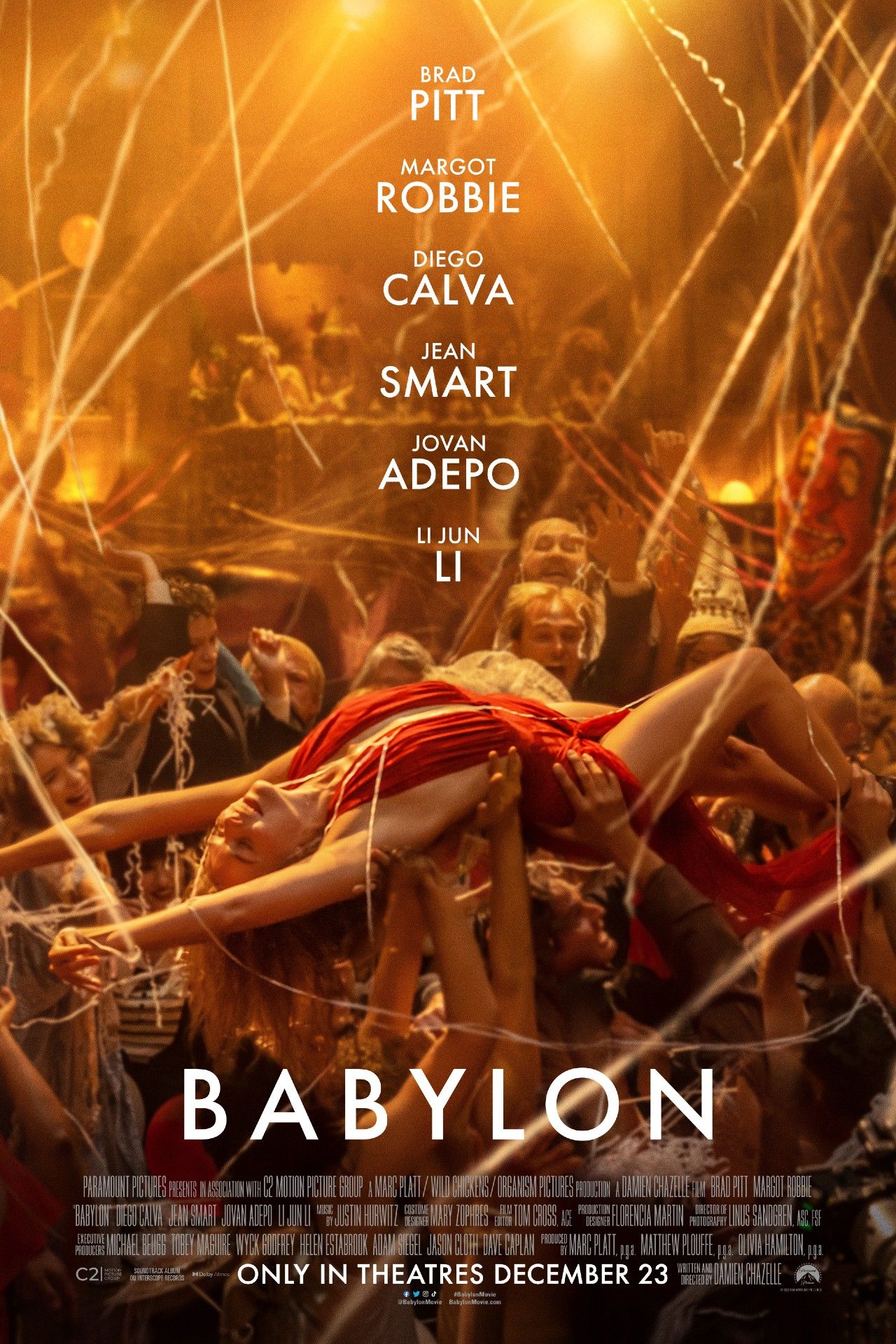
Babylon
Babylon is a film by director Damien Chazelle (La La Land) that focuses on characters during the great Hollywood boom – when silent films moved to talking pictures, and the medium was reinvented. During this era of decadence and glamorous lifestyles in pure excess, Babylon explores the rise and fall of fictional Hollywood greats that mirror nonfictional actors and actresses throughout American history.
- Director
- Damien Chazelle
- Release Date
- December 23, 2022
- Studio(s)
- Paramount Pictures
- Runtime
- 189minutes



